
Citizen MPACT
Taking action towards social impact through gamified learning
MY ROLE
Product Designer
TEAM
Chief Operating Officer | Lead Engineer
SERVICES
01
UX Strategy & Leadership
Led the end-to-end redesign process for MPACT, applying design thinking to align user needs with business objectives.
02
User Experience Design
Conducted user research, defined design objectives, and created intuitive UX flows that enhanced engagement and usability.
03
User Interface Design
Crafted UI designs that modernized the platform's visual identity, improved accessibility, and elevated user trust.
CONTEXT
Citizen MPACT is a mobile platform designed to empower users to learn about social causes, take meaningful action, and create positive change. During its beta launch, users praised the content quality, validating MPACT's core purpose. However, the beta revealed significant design shortcomings: inconsistent navigation, limited personalization, and unclear connections between user actions and impact. These issues hindered user engagement and reduced the platform's potential to drive sustained social good.
Background
Beta Phase – Inception and Background
The initial beta phase marked MPACT's first launch, designed primarily based on executive vision and assumptions about user and partner needs. During this time, I collaborated with the Head of Product, UI designer, and graphic designer to translate these stakeholder requirements into an initial product that could demonstrate viability to potential partners.
BETA PHASE PROCESS
01
Rapid research
Informed by stakeholder insights, rapid research swiftly captured key perspectives of users and prospective partners.
02
Define & Iterate
Through brainstorming, our team chose features aligning stakeholder input and user and partner expectations.
03
Design & Iterate
Adopting a dynamic process, we initiated weekly reviews to shape and refine the beta version and keep aligned.
Beta Phase – Highlights
1
Content validation
Users responded enthusiastically to the content, especially the topics of The Natural World, Mysteries of Science, and Climate Action.
2
Usability gaps
Early feedback revealed challenges with navigation, consistency, and understanding the real-world impact of the user's actions.
When priorities shifted back to MPACT after a company focus on white-label solutions, I led a strategic design thinking process to address these gaps and redesign the platform for greater clarity, engagement, and impact.
Discover
When I began the redesign process, I focused on understanding the most critical issues uncovered during the beta phase. With limited capacity for direct user interviews, I applied a hybrid approach — combining pilot program analysis, stakeholder and partner feedback, and a heuristic review of the existing experience.
Research Goals
01
Motivation mapping
Understand user motivations, behaviors, and pain points.
02
Experience gap analysis
Identify gaps in navigation, engagement, and perceived impact.
03
Strategic alignment
Align redesign objectives with user needs and business goals.
Pilot Program Analysis
TOP CHANNELS
-
The Natural World
-
Mysteries of Science
-
Exploring Technology
-
Design & Innovation
-
A Better You
TOP CAUSES
-
Climate Action
-
Quality Education
-
Gender Equity
-
Clean Energy
-
Sustainable Cities
USER ATTITUDES
-
" I know what to eat to be healthy"
-
" I like meeting diverse people from different backgrounds"
-
"If I see a problem, I can fix it"
-
"I care about what goes on in the world and want to create change"
Stakeholder & Partner Feedback
1
Measurable impact
Partners want clear metrics showing user actions lead to real change and impact.
2
Fun and engaging experiences
Users value gamification, rewards, and personalization to keep them motivated.
Heuristic Review
01
Disjointed navigation
Navigation was inconsistent and made content hard to find.
02
Irrelevant experience
Limited personalization reduced relevance and user satisfaction.
03
Ambiguous outcomes
The impact of user actions was unclear, weakening long-term engagement.
Key Findings
1.
Interest in social causes
Strong motivation to contribute to causes that resonate personally.
2.
Lacking discoverability
Difficulty finding activities aligned with interests or resuming incomplete ones.
3.
Disjointed experience
Weak connection between activities, causes, and organizations.
4.
Unclear contributions
Users need visibility into the tangible outcomes of their actions.
THE OPPORTUNITY
How might we create a user-friendly platform that encourages exploration and seamless discovery, while giving users the clarity, motivation, and connection they need to meaningfully contribute to causes?
Define
With the research synthesized in Discover, I moved into framing the design challenge and setting a clear direction. This phase focused on aligning business priorities with user needs, outlining measurable goals, and defining the design objectives that would guide the redesign.
Business Goals
1
Secure partnerships
Demonstrate authentic, sustained user engagement and measurable impact to attract and retain partner brands.
2
Design an engaging, scalable app
Create a dynamic platform with intuitive navigation, engaging content, and features that drive long-term use.
Design Objectives
Discovery & Navigation
Improve findability with better search, personalized recommendations, and clearly defined categories.
Progress & Growth
Make it easy to resume activities, track progress, and view contributions.
Empower small actions
Highlight individual contributions alongside global impact to inspire motivation and action.
Unified relationships
Connect activities, causes, organizations, and donations into a cohesive system.
Target User Profile
USER PERSONA
Melissa Rodrigo
The Green Newbie
"I'm driven to create positive change and make a meaningful impact on the world. I want to discover how I can use my skills to contribute to a better and more sustainable future."
18 years old
New York City, NY
College Student
Sociology
Unsure of personal impact
Make informed choices
Create a positive impact
Learn about social causes
EMPATHY MAP
Thinks
"I want something easy"
"There's so much info out there!"
"I don't want to make any huge decisions"
"I want to fit in with my new friends"
"I'm not sure where to go from here"
"The planet and society needs our help"
Says
"How do I help at my age?"
"Should I be recycling this?"
" Not sure what sources to listen to or follow."
"Where should I start in being sustainable?"
"Why is it bad to buy fast fashion?"
"I want to feel good about my actions"
Does
Volunteers at animal shelter
Uses a tumbler for her water
Brings reusable bag everywhere
Eats vegan when its convenient
Shops at her local thrift stores
Follows her eco-friendly friends actions
Feels
Not sure if she is doing enough good things
Excited to try new things
Overwhelmed by amount of information
Concerned about global impact
Positive about being able to create change
Excited about starting college
Ideate
To generate solutions, I facilitated structured brainstorming with the COO and engineering team. We used insights from Discover to frame How Might We questions that directly addressed user needs and business goals.
-
Maintain user motivation while moving between learning and action?
-
Make individual contributions feel significant in the context of collective impact?
-
Design progress indicators that satisfy both learning and contribution goals?
HOW MIGHT WE...
KEY IDEAS & PRIORITIZATION
High Impact
Update UI
Enhance navigation experience
Enhance search functions
Show contributions
Improve discovery
Low Effort
High Effort
Incorporate education within causes
Badges
In-App donations
Progress bars
Peer Challenges
AI recommendations
Low Impact
Test & Prototype
To bring ideas to life, I created high-level wireframes and prototypes focused on core features and user flows. This allowed us to validate navigation, content categorization, and impact visualization before committing to final designs.
TESTING APPROACH
We used a dogfooding process — testing the prototype internally with our team to quickly identify friction points, confirm flows, and align on feature priorities. This approach enabled rapid iterations and ensured the design was aligned with both user needs and technical feasibility.
WIREFRAME FLOWCHART

TESTING OUTCOME
Expanded discovery paths
Users can discover through multiple entry points: interest, organization, cause, and curated collections.
Seamless navigation & progress
Linked causes, activities, and organizations plus resumable activities make exploration and completion easier.
Clear impact visualization
Contributions are quantified and shown alongside global metrics, boosting motivation.
Deliver
In the delivery stage, I translated refined prototypes into a cohesive, polished final design. The result directly addressed the original challenges — limited activity discovery, weak connection to impact, and a disconnect between user actions and measurable results.
The final design focused on our earlier defined design objectives:
Discovery & Navigation
Improve findability with better search, personalized recommendations, and clearly defined categories.
Progress & Growth
Make it easy to resume activities, track progress, and view contributions.
Empower small actions
Highlight individual contributions alongside global impact to inspire motivation and action.
Unified relationships
Connect activities, causes, organizations, and donations into a cohesive system.
Find activities by followed organization
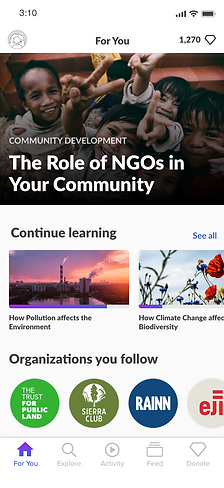
Recommended activities
Personalized recommendations

Find activities by interest
FINAL SCREENS




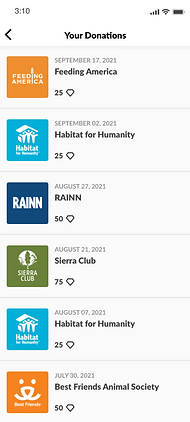

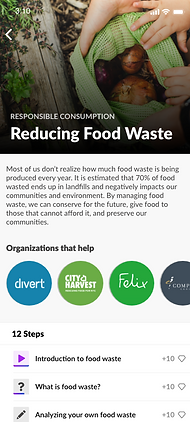

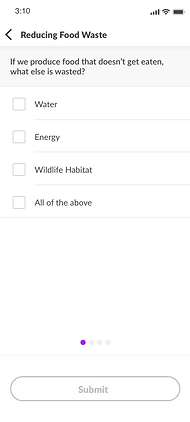

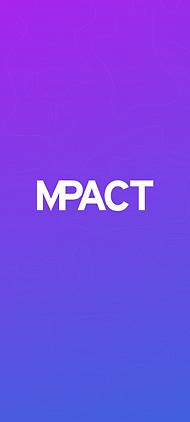


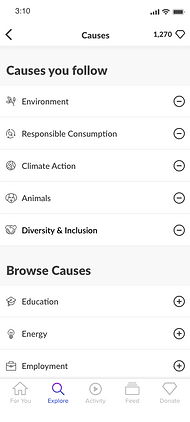


Reflect
Navigating the MPACT project underscored the importance of validating early and designing with constraints in mind. Limited direct user research and shifting business priorities required flexibility, rapid iteration, and strong alignment between user needs and business objectives. The process reinforced my commitment to grounding design in measurable impact and connecting every user action to a clear outcome.
CHALLENGES
SUCCESSES
Shifting business priorities
Company focus moved away from the redesign mid-process, slowing progress and delivery.
Limited user testing opportunity
Minimal access to users meant relying more on assumptions, increasing design risk.
Cohesive, logical UX
A unified, systematically structured experience that improved navigation, engagement, and overall usability.
Updated UI
A refreshed visual design that elevated appeal and better resonated with the target audience.
Thoughtful design approach
A user-centered process that produced a more impactful and meaningful platform.
Opportunities
01
Expanded user research
Conduct longitudinal studies to track retention, motivation, and behavior change over time.
02
Enhance impact metrics
Develop richer, more dynamic ways to track and visualize both individual and collective contributions.
03
Broader ecosystem integration
Explore strategic partnerships that embed MPACT into adjacent platforms to expand reach and relevance.



